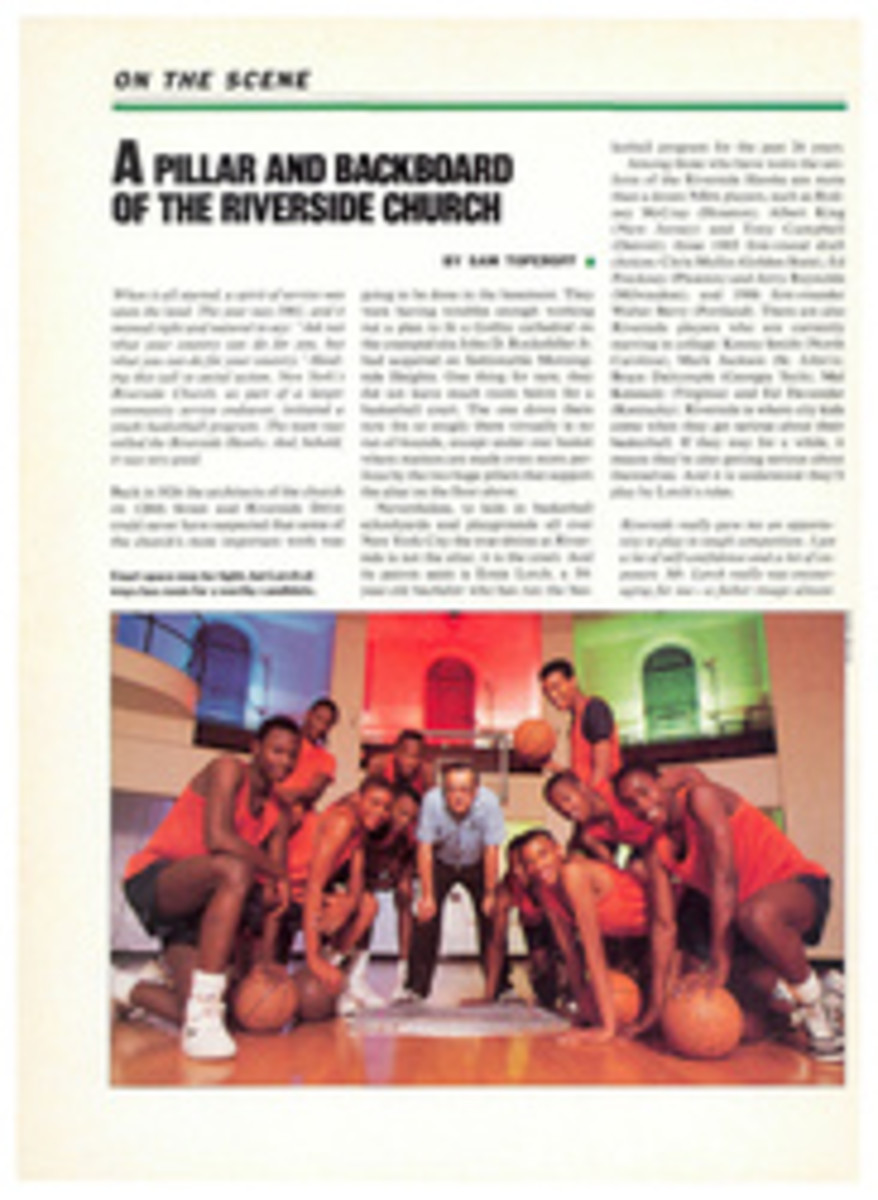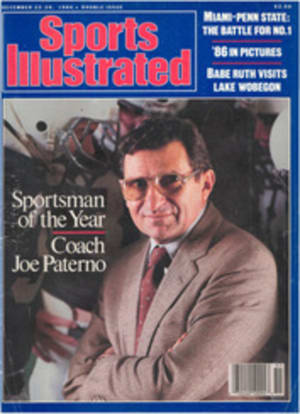
OVER FELL, OVER DALE, HILL RACERS HIT THE TRAIL
In the English village of Buttermere, Cumberland (pop. 50), the winner of the annual fell race crosses the finish line in pleasant spring sunshine. David Cartridge, of Bolton, Lancashire, has run 9½ miles and climbed three mountains—some 3,700 feet of total elevation—and returned to the cheering town in less than 90 minutes. As Cartridge finishes, the last runner is still traversing the barren peaks, the fells of Cumbria, at only the halfway mark.
A team of Italian runners wanders along the northern slope of Crag Hill, attempting to find Checkpoint 4 at the summit, which is covered in dense fog. Meanwhile stragglers back at Checkpoint 2, on the other side of the valley, have discovered that the runners before them have trampled the steep hillside into mud, and a crowd of spectators watches as the unfortunates descend the mud slide and tumble into an icy stream. The stream is fed by the melting snow that runners at Checkpoint 3 are now negotiating. Runners at Checkpoint 4 encounter rain as they come upon the fog bank filled with lost Italians.
Closer to Buttermere, Larry Grossman, of Brookfield Center, Conn., confronts a barbed-wire fence and then carefully climbs the stile. Between him and the finish line is a pasture of mud, manure and sheep, which display a mild interest in his presence. "This gives new meaning to the term track and field," he says, stepping carefully to avoid the hazards. A hundred yards down the road, a runner has left a pasture gate open, and 12 cows, joining in the excitement, create a ministampede to the finish line. Racers jog in place behind the cattle in the narrow lane.
"This time when my club asks why I didn't better my time this year," says one fell runner caught in the traffic, "at least I have a different excuse."
Wherever else hill racing may exist (Italy, Germany, Austria and Switzerland all have active hill-running clubs), it is definitely in Great Britain, with 188 fell races this year, that the sport has found its most enthusiastic home. The British Isles have a surfeit of barren, un-tillable hills in the 1,000-to-3,000-foot range, mostly used (if at all) for sheep grazing, and no part of the nation is very far from this type of countryside. The colorful Buttermere Fell Race, also known as the Sail Beck Horseshoe (the course is approximately horseshoe-shaped), is one of Great Britain's most popular fell races, if only because it is set against the unrivaled scenery of the Lake District.
Fell racing can be traced back almost 1,000 years, according to Bill Smith, whose 600-page Studmarks on the Summit (referring to the marks left in the mud by the studs on the bottom of running shoes) is the encyclopedia of fell racing. In 1040, Scotland's King Malcolm Canmore wanted to hire a "running footman," and the employment situation being what it was, nearly the whole male population wanted the job. So the king staged a race, a run up Creag Choinnich (1,764 feet), and offered, in addition to the job, a handsome sword and a purse of gold to the winner. That may still be the biggest prize offered in the all-amateur sport of fell racing.
Today, events are organized by the local fell-running clubs and entry fees rarely exceed $5. Some prize money is given—say, ¬¨¬®¬¨¬£50 to the winner—and the races are frequently won by the local club members themselves. Often the event seems more like a town picnic than a major sporting event.
Most fell racers require three basic pieces of equipment: a compass (for when the mists close in), a topographical map (for when the hills all look alike) and proper clothing to prevent hypothermia. After registering with race officials, runners scrutinize the official map for the designated mountaintop checkpoints and are given a key ring full of tokens. At each checkpoint, the competitor drops a token into the hand of a waiting official. How a runner gets from checkpoint to checkpoint is his or her business—and strategy.
A good deal of stamina is required to haul a weary body up thousands of feet of elevation and over great distances, often at a marathon pace, and a fell race is among the most demanding of running events. The Fell Runners Association of the British Isles puts out a catalog of races that shows what fell runners are up against in the major events.
The Three Peaks Race is run from the heart of the Yorkshire moors, starting at a village called Horton in Ribblesdale, not 30 miles from where Emily Bronte wrote Wuthering Heights. The course is a 22-mile path linking three fells, and the race is run in the unfailing dreariness of late April. In 1982 John Wild of St. Athan, Wales, covered the distance in 2 hours, 37.3 minutes, which is remarkable when you consider Three Peaks demands a combined climb of 4,500 feet along the way.
In June there's the Welsh Peaks Race. It's a mere 20 miles but doubly steep—a total of 9,000 feet in elevation, including a sprint up Wales's highest peak, Snowdon (3,560 feet). Scottish fell racing is represented by the purist's favorite, a simple 10-mile jog up Great Britain's highest mountain, Ben Nevis (4,406 feet), run in September.
On the uphills of any of these races, it's hard to tell the experienced fell runner from the miserable, already nauseated first-timer, because the muscle-saving, efficient way to run up a hill is to bend forward, almost doubled over, as if to fall up the hill. "The purpose in running up the hill holding your knees—and it does look funny, doesn't it?—is to take the pressure off your shins," says Danny Hughes of the Cumberland Fell Runners Association, which sponsors some of the races in the Lake District.
Hughes says that road runners will find their calf muscles and the front of their thigh muscles taxed greatly in fell racing. "The only way to practice fell racing is fell racing," says Hughes, "although I did know of a champion who practiced by stepping on and off of a chair as slowly as he could to get the legs used to lifting the body."
Connecticut's Grossman, an experienced marathoner, ran his first fell race at Buttermere. "Like most first-timers," he said, "I took one look at the hills and figured uphill was going to be the worst part. In reality the tricky part is down."
Most falls and slips, and most bruised arches and sprained ankles, result from barreling down the mountainside, improvising on the spot, not knowing where you will step until you've already stepped there. Pauline Stuart, a former Ladies Fell Running Champion of the British Isles, says downhill running is a matter of instinct. "It seems to me that when you are cautious and try to plan each step—get overly aware of yourself—that's precisely when you fall," she says. "Just run it fiat out, and the feet take care of themselves."
Fell-running events in Britain are diverse enough that you can find something perfectly attuned to your wishes—long distances and mild slopes; short, very steep courses; all uphill; all downhill; you name it. Catching on now in England is the uphill mile, a straight shot up nothing less than a 10% grade. Times of six to seven minutes aren't unusual. For the ultimate fell-running experience there's the 50-mile Saunders Lakeland Mountain Marathon, which takes in a total climb of 14,000 feet over two days in the Lake District, with a break in between for some rugged mountainside camping.
"The appeal of fell racing," says Hughes, "is in its closeness to nature." For while running along the top of mountain ridges, traversing streams, finding one's own path, one must, as Hughes says, "think like nature thinks."
Grossman, with one fell race under his belt, agrees. "There may be more prestigious events, more famous marathons, greater challenges, but nowhere in running is there a feeling like running above the clouds, with valleys, cliffs, waterfalls on all sides of you. I don't think racing could be any more beautiful."
ILLUSTRATION
KIM WILSON EVERSZ
William Barnhardt is mastering the rolling terrain of Oxford, England.

